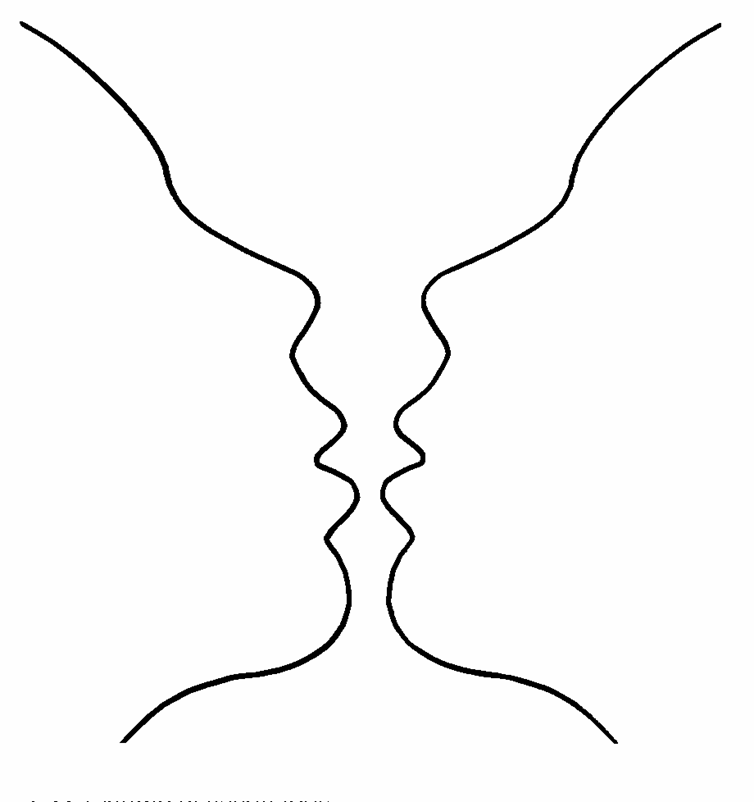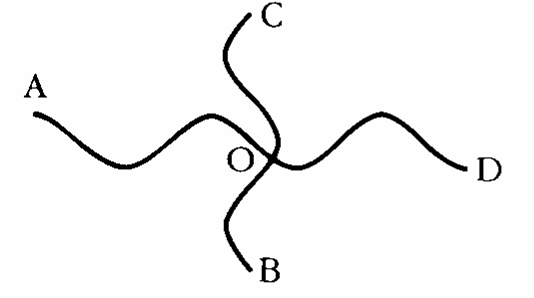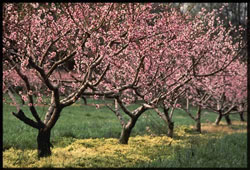Gestalt Theory of Visual Perception
The Gestalt theorists were the first group of psychologists to systematcially study perceptual organisation around the 1920’s, in Germany. They were Johann Wolfgang von Goethe, Ernst Mach, and particularly of Christian von Ehrenfels and the research work of Max Wertheimer, Wolfgang Köhler, Kurt Koffka, and Kurt Lewin.
The coming to power of national socialism substantially interrupted the fruitful scientific development of Gestalt theory in the German-speaking world; Koffka, Wertheimer, Köhler and Lewin emigrated, or were forced to flee, to the United States where they continued to work, in spite of the dominant theoretical field for that time, of behaviourism.
The
Gestalt of Figure/Ground Relationships

Perhaps the best known example
of a gestalt is the vase/face profile which is fully explained in the
six Gestalt Principles detailed
below.
Gestalt means when
parts identified individually have different characteristics to
the whole (Gestalt means "organised whole") |
Configuration with Emergent Features
 |
 |
Which of these two pictures is easier to remember?
-
the one on the left is seen as a whole room
-
the one on the right is split into its part
Six Principles of Gestalt Perception
Principle 1 - Proximity

The groups we see are
1 + 2 = as one group
3 + 4 = as another group
Similarly, on the left, three groups of dots in three lines. What happens with the evenly spaced dots?
The principle of proximity or contiguity states that things which are closer together will be seen as belonging together.
Principle 2 - Similarity
Similarity means there is a tendency to see groups which have the same characteristics so in this example, there are three groups of black squares and three groups of white squares arranged in lines.
The principle of similarity states that things which share visual characteristics such as shape, size, color, texture, value or orientation will be seen as belonging together.
Principle 3 - Common Fate

Suppose both principles of proximity and similarity are in place - then a movement takes place - the dots begin to move down the page.
They appear to change grouping.
Principle 4 - Good Continuation

Seeing things as whole lines (sequential) is clearly important. But 'being
in wholes means' that few interruptions change the reading of the whole
lines.
A to O and Oto D are two lines. Similarly,
C to O and O to B are two lines.
The principle of continuity predicts the preference for continuous figures. We perceive the figure as two crossed lines instead of 4 lines meeting at the center.
Principle 5 - Closure

Related to principle of good continuation,
there is
a tendency to close simple figures, independent of continuity or similarity.
This results in a effect of filling in missing information or organising
information which is present to make a whole
In the circle at the top its seen easily. In the other to figures it's a little more complex. The second figure can be read as two overlapping rectangles (the gestalt) whereas it can also be seen as three shapes touching; a square and two other irregular shapes.
The final shape can be seen as a curve joining three squares or as three uneven shapes touching.
Principle 6 - Area and Symmetry

The principle of symmetry describes the instance where the whole of a figure is perceived rather than the individual parts which make up the figure.
See also Rudolf Arnheim, a Berlin gestaltist who emigrated to the United States, became professor of the Psychology of Art at Harvard University and published 13 books on gestalt theory and art.
Go to Gregory's Theory - Gibson's Theory
The principle of area states that the smaller of two overlapping figures is perceived as figure while the larger is regarded as ground.
The principle of the symmetrical figure is that it is seen as a closed figure. Symmetrical contours thus define a figure and isolate it from its ground.


